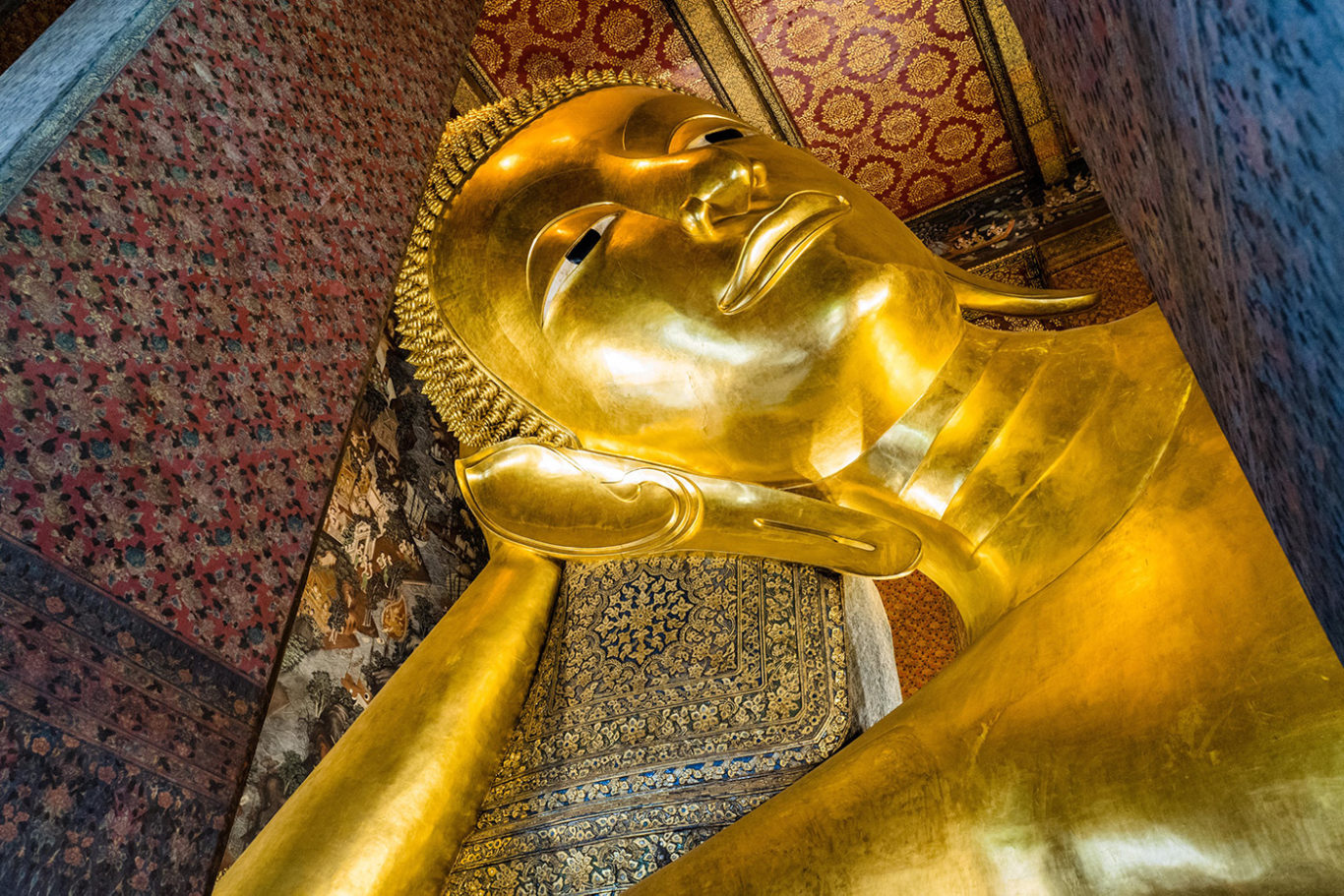What’s the Difference Between Theravada, Mahayana and Vajrayana?

A giant reclining Buddha statue at a Theravada temple in Bangkok, Thailand represents the Buddha’s parinirvana, or death and release from samsara. | Rolf_52 / Alamy Stock Photo
If you’re just starting out on the Buddhist path, it’s easy to find yourself overwhelmed by the number of different schools and their practices: Should you explore Zen? What is Shambhala? What lineage does Vipassana come from? Is Vajrayana the same thing as Tibetan Buddhism?
Buddhist schools have proliferated and evolved over time. While there exists today an astounding variety of Buddhist schools and lineages, there are three main schools that they can all be traced back to.
The three main branches of Buddhism are the Theravada, Mahayana, and Vajrayana schools. They’re also known as the three “vehicles,” because each represents a different means of carrying the practitioner across the ocean of samsara to the shore of enlightenment. The first school to develop was Theravada, followed by Mahayana, and then Vajrayana, the largest sub-tradition within Mahayana Buddhism. Today, the Mahayana school is the most commonly practiced form of Buddhism around the globe.
Learn about the two major traditions and the largest sub-tradition here.
Discover Level 2, Deck 1:
What is Theravada Buddhism? Theravada, the “way of the elders,” is the sole surviving sect among those that arose after the Buddha’s death.
What is Mahayana Buddhism? The Mahayana (“Great Vehicle”) tradition, which arose in the 4th century, is now the largest Buddhist sect in the world.
What is Vajrayana Buddhism? A form of Mahayana Buddhism, the Vajrayana (“diamond”) vehicle is known for its swift and powerful methods for achieving awakening.
Recommended Reading:
- Theravada Vipassana Practice, by Jack Kornfield
- Why I Walk Two Paths, by Gil Fronsdal
- An American Tantra – Interview with Justin von Bujdoss, by Karen Jensen
- Won’t It Be Grand?, by Sarah Harding
- Under One Umbrella, by Rita M. Gross

Tricycle is more than a magazine
Gain access to the best in sprititual film, our growing collection of e-books, and monthly talks, plus our 25-year archive
Subscribe now